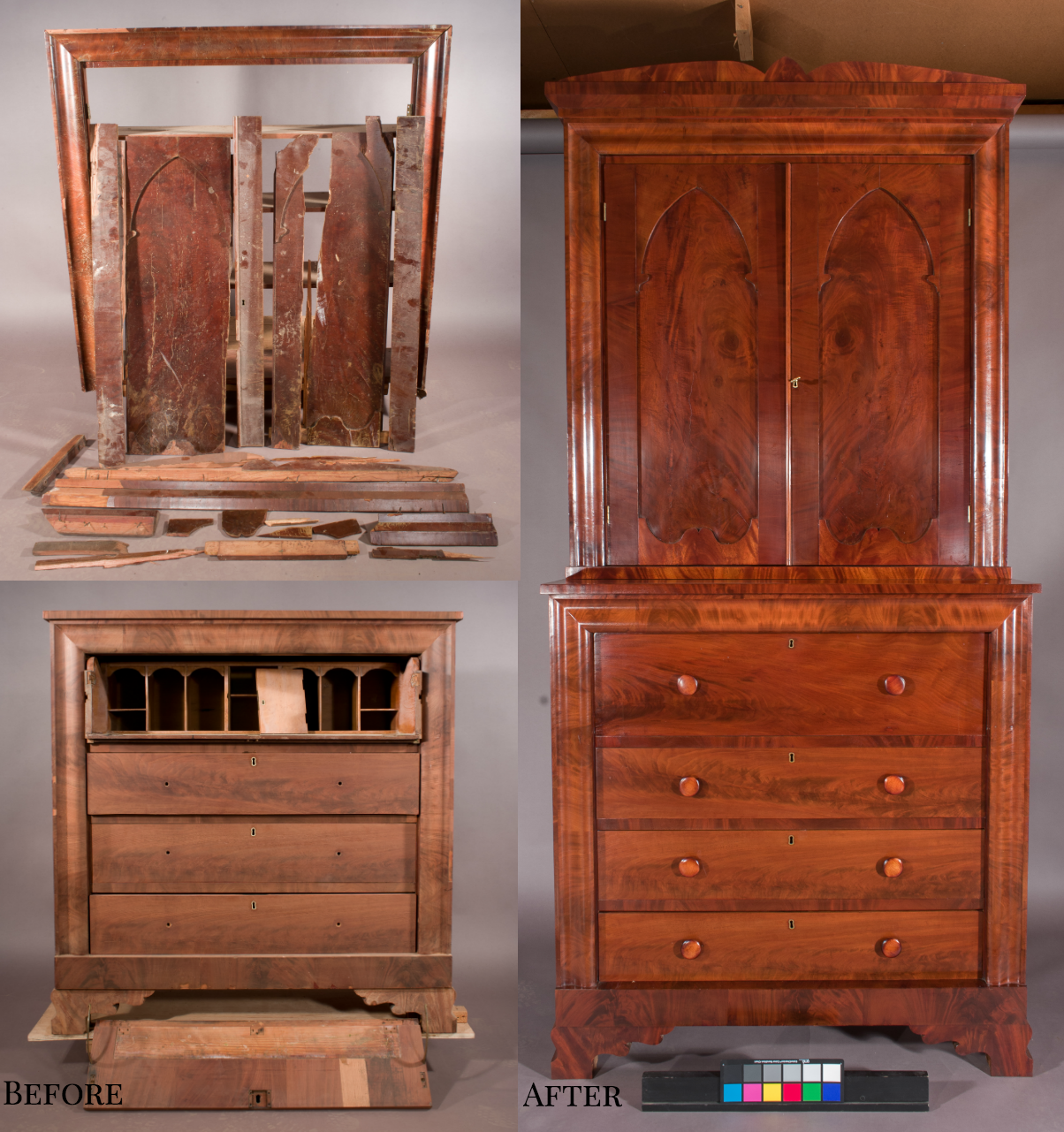Furniture Conservation
Furniture conservation and restoration are very different in scope, but often a conservation treatment will include some restoration. Treatment priorities are based on preserving as much original material as possible. Consultation with the collector of object informs the overall treatment protocol. The intended use of an object is critical before finalizing a treatment recommendation. For example, a chair destined for an exhibition or gallery will often receive a structural treatment that is different from one going into a private home that will be used regularly. Similar consideration must be given to chests of drawers, tables, desks and any other object with moving parts. Much of the time a conservator spends on a treatment involves undoing well-meaning, but poor historic restoration attempts. These include the misinterpretation of period styles, construction methodology and finishing methods/materials.
Use is also an important factor when weighing the approach to finish treatments. Is the finish well adhered, what is it comprised of, what is its overall condition, are there aesthetic considerations, is it light damaged or faded? Finishes can often be satisfactorily consolidated and cleaned. In cases where the finish is not appropriate for the period, it is removed and a correct resin is applied to recreate historic appearances.
Treatment Examples (click on each of the images for more information):














